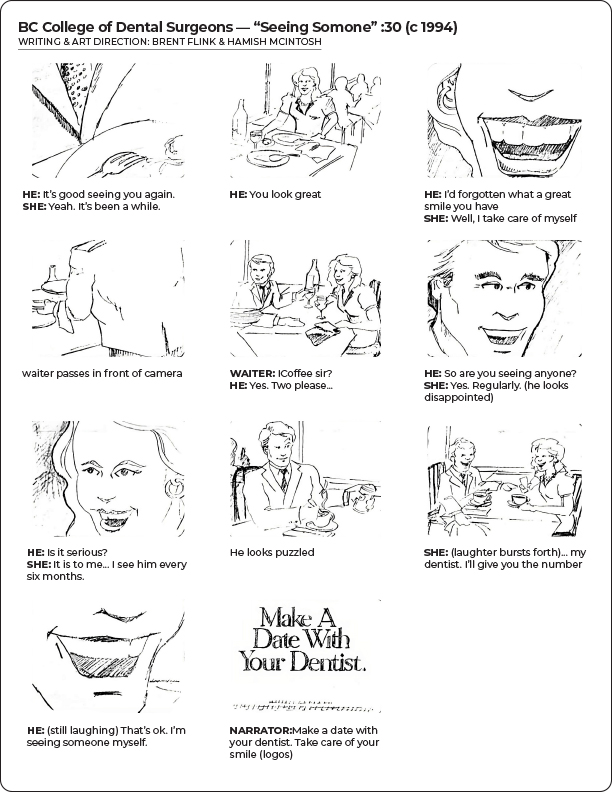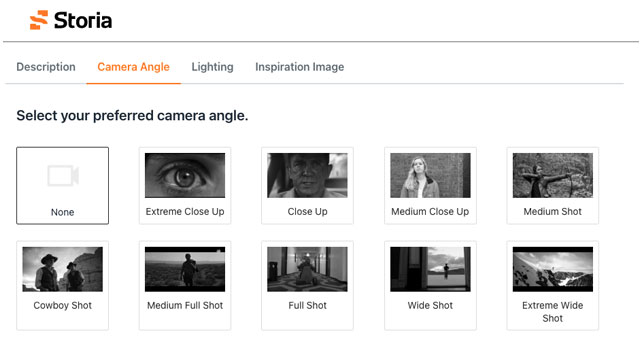
Back in the 1980-90’s, I proudly considered myself an “ad man”, in the style of TV’s “Mad Men,”. My coworkers and I created campaigns for businesses of all kinds, across all sorts of media channels. We created did promotions for fast food chains, direct mail campaigns for phone plans, print ads for canned tuna, radio commercials for new coolers, and now and then, if we were lucky, we’d get a TV commercial to work on.
The internet and computers had yet to make their mark on advertising and graphic design and although computers existed, they were used by our typesetters and post production houses and few people understood how to use them. Our offices were filled with the scent of felt pen fumes, coffee, and cigarettes, and we developed and presented our ideas using felt pens and marker pads. Old sketches and meticulously collected clippings and ephemera served as our reference files, which we all called “morgues.” These extensive file-cabinets-full reference collections helped ensure we were always ready for whatever seasonal or promotional campaign theme might come our way.
I share this bit of background simply to illustrate the amazing technological tools we now take for granted. Even a simple print ad concept in 1989 could take an hour or two to develop, write and sketch out for presentation.(if you were pretty quick about it) Add 2 or 3 hours if it had to be in colour. Another hour or so if it needed reversed headlines (make little hand-painted brushed lettered headlines. — I kid you not.)
Visualizing creative ideas has always taken time.
Usually, just a little more time than whatever amount you have allotted. And until recently, your choices for making storyboards were somewhat limited. You could…
- (A) Hire a storyboard artist or
- (B) Hack together suitably similar images from sites like FilmGrab.com, ShotDeck.com or Google Images.
If you’ve got time and budget, a storyboard artist is a great way to go.
But their professionally drawn boards can take weeks or even months and cost thousands or tens of thousands putting their services out of reach for many indie film-makers. And lastly, because these types of storyboards are often very rough sketches intended to communicate actions for zooms, pans, effects, angles and more, they can be difficult to work with in establishing a films aesthetic as well.
Storia.ai intends to change that by incorporating generative image technology into the process. When I first came across the site I signed up for early access by filling in their form and…
Today, I got access to Storia.ai.
It ingests scripts and makes generative art powered storyboards.
First off. I’ll acknowledge that screenwriting is not my day-to-day world. I’ve art directed about 2 dozen TV commercials, worked on art departments of a few made-for TV movies and created a few corporate and online videos. But it’s been years since I’ve worked in that world. Take my opinions as what they are. Opinions. I am only offering my thoughts as a curious would-be user and as I don’t work in TV and film production daily, your experience and opinions may vary.
The Storia.ai process.
1. Start with a script formatted to industry standards
If you’re unfamiliar with proper screenwriter formatting, it’s fairly easy to learn and consists of formatting content in predictable ways so that the resulting script follows standard conventions and is easily read and understood. Scene headings, action, character names, dialogue and camera directions all look slightly different and are super quick to apply when you get the hang of it.
As my sample was a TV spot I did many years ago, and I have a tendency to be a very controlling Art Director, my shot list was very granular. I had particular shots in mind for each sentence and no doubt in a movie, one scene would represent minutes, not seconds.
2. Upload your formatted script as a PDF
Begin by uploading your properly formatted FinalDraft PDF script.
FinalDraft’s .fdx format, would seem to be the industry standard. Final Draft is the granddaddy of script-writing software it seems, with about 60% of the market, according to Stephen Follows Film Data & Education site. But it’s not the only player. There are quite a few others including a free, open-source package called Trelby that will also export screenplays in .fdx format. Check out the other options and a comprehensive review of screenwriting software over at Stephen’s very comprehensive site.
3. Choose from one of their cinematic styles (or add yours)
Then select a director’s style you’d like it to emulate. Or combine a few if you’d rather.

4. Select an AI Engine for Image Generation
This area was pre-populated with “Stable Diffusion” as the only choice and no options seemed evident for adding another engine. Though I would imagine that if they’ve made a selection area there will be something to select from one day. Today though, it’s just SD.
5. One more click. And Storia starts working.
Click the “Generate the first 10 scenes” button and Storia will chop your script into scenes, then present images in boxes next to your formatted script, scene by scene.
My Storia account gave me a very generous 10,000 frames to start. (I’ll need about 10 for my 30 second spot). Not sure about pricing at this point, but I suspect this’ll only be free for a short time.
6. Click the “Edit pencil” and start making adjustments.
Each visual frame has within it the option to adjust or change description, camera angle, lighting and add an inspiration image. I wasn’t thrilled with the image Storia initially gave me and did a Google image search for something I like better. I uploaded that into the inspiration panel and clicked to discover Storia had added some “people-esque” figures sitting at the tables.
I’d say “people” but my results looked at lot like the ai generated images you may have seen a year or two ago. Twisted nubs where heads should be etc. Let’s just say “people-esque” and move on….
Stable Diffusion is lagging behind — a bit.
As an open-source model, SD, has a large community behind it, but it’s still lagging behind Midjourney in terms of overall polish at this point, so I’m sure this’ll get better eventually. Right now though, the straight-out-of-the box images are underwhelming. Honestly, I was discouraged about this product until I dug in a bit more.
Today, I tried incorporating Midjourney into the workflow, to see what I could do.
Instead of simply uploading an inspiration image, I fed the same image into Midjourney and used the “/describe image” command to have Midjourney write a good image prompt. Then I took that resulting prompt and fed it back into Storia under “image description”. It’s better. But still not as good as images made natively in Midjourney.

From there, you can edit camera angles and lighting via a visual selection of sample angles, and if you’re not liking the images it’s showing you, you can upload an “inspiration image” as I mentioned earlier.
It’s not a terribly fast process.
But that could be because I’ve had to learn 2 new pieces of software to do this review as well as learn how to properly format a script. Owww. My brain.
But isn’t THAT the sort of stuff that AI should just DO? Without me having to work so hard?
- What if it could work like Chat GPT and lead me through the script-formatting process?
- Or format content knowing how a proper script is supposed to be formatted?
- What if had built-in Midjourney as an option?
The example projects really seem to oversell the visual capability of the image generator and some seem like almost exactly believable scenes from movies. If they were all done natively inside the app, it’d be great if they provided a tutorial on achieving similar results.
I wondered, looking at the samples if they were done offline in another image generator or by a “prompt-whisperer”. Or both.
Read about their development process and the struggles they’re dealing with on the Storia blog. Founder Michail Eric, explains the current state of things and challenges they’ve faced. Clearly there are some big hurdles yet.
Would I recommend Storia? That depends.
Are you a Writer? Or an Art Director or Production Supervisor?
If you’re a budget-conscious indie film writer, Storia may be a really helpful tool for working through visualizing your script. As the Director, Cinematographer, Production Designer(s), Art Directors and art department are brought on board, you could work together as a team to iterate and improve upon the overall look and feel of the project.
You WILL definitely need to learn to craft good text-to-image prompts, though if you want to really maximize its effectiveness. (I’ll be offering a course on this soon. Let me know if you’d be interested.)
Are you an Art Director? Or someone who can draw?
If so, it may be faster to draw your best pencil boards then either grab a file of inspiration images to share with your team or dig into image generation using a better tool, like Midjourney to craft the look and feel separately from the storyboards. This way, however, doesn’t allow for iteration and team involvement and physical boards have to be scanned and emailed back and forth. A bit of a hassle unless everyone’s under one roof and productions under way.
To be fair, it’s not a click, click and you’re done operation.
I’ve been spoiled with super quick ai apps thus far and I may have had a misguided idea of how easy/difficult this process would be. As I said, screenwriting for film and TV is not my background. But if you’re a scriptwriter who already knows proper script formatting techniques, you’re lacking “a big film budget” and can’t draw, this may be just the ticket.
I’m excited to see where version 2 takes us!
#aitools #machinelearning #aiart #filmandtelevision

